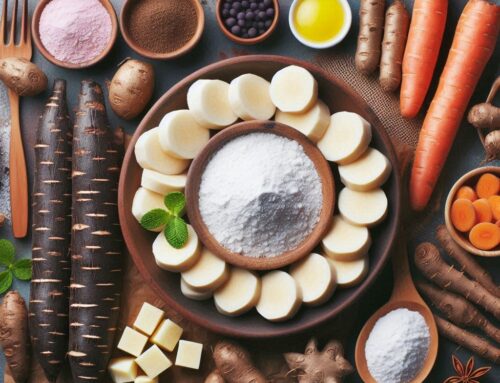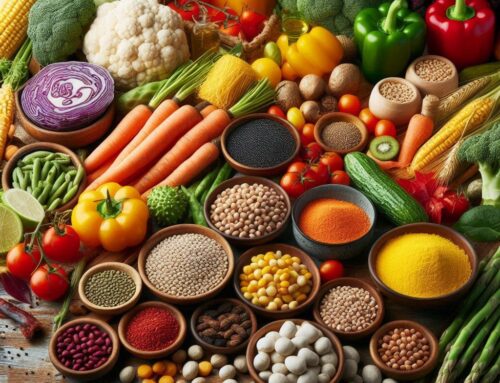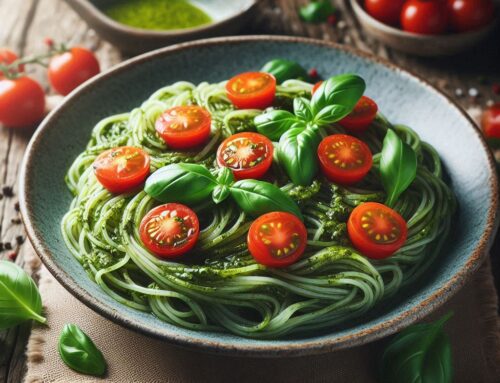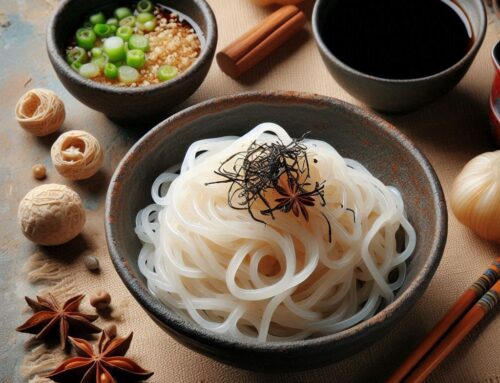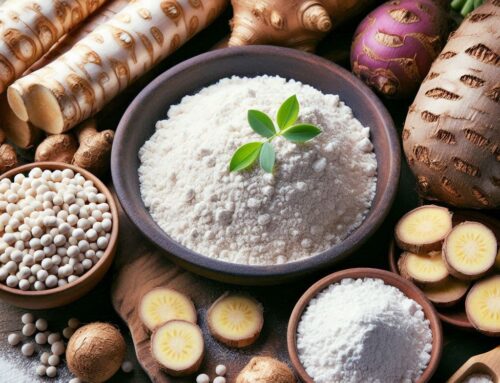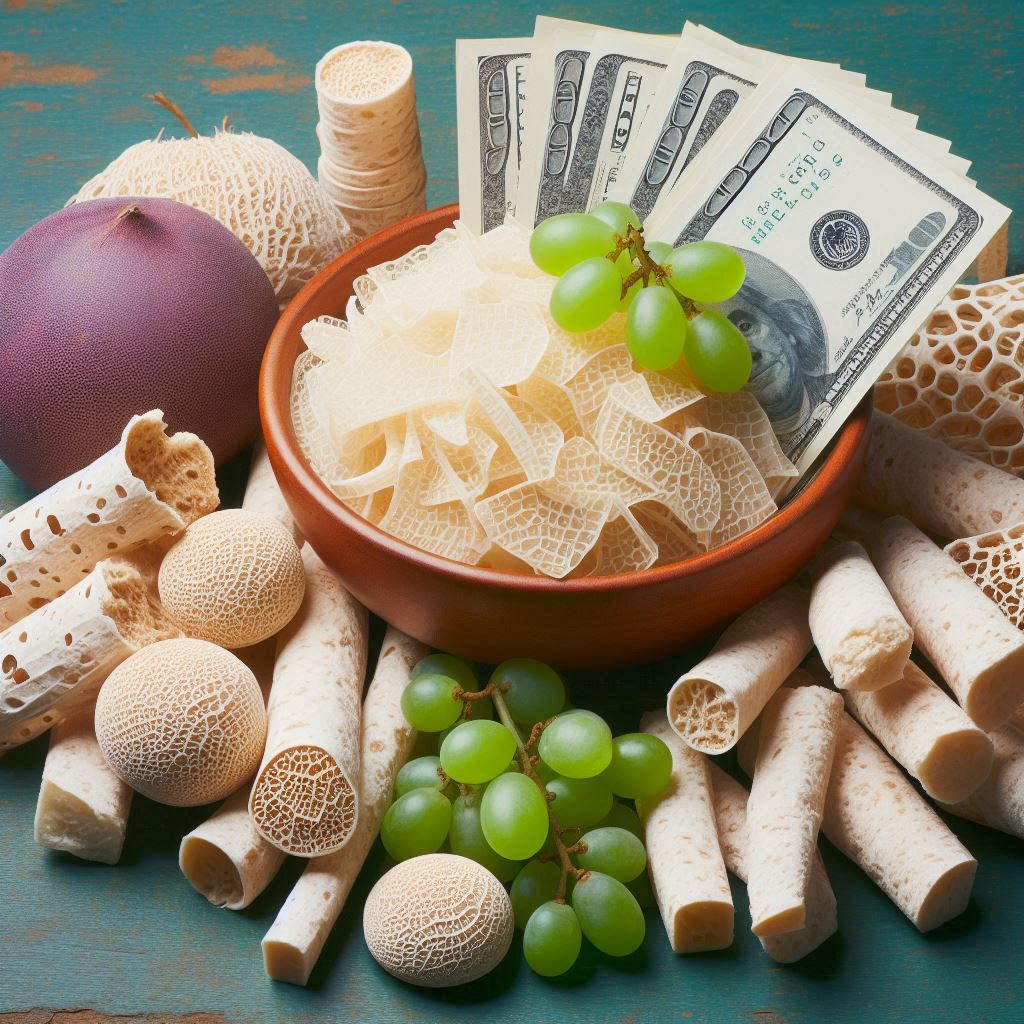
Understanding Konjac: What Makes This Plant-Based Ingredient Unique?
Konjac, a plant native to parts of Asia, has garnered attention for its unique properties and health benefits. The konjac plant, specifically its root, is the source of glucomannan—a dietary fiber renowned for its impressive ability to absorb water and expand in the stomach. This characteristic makes it an effective tool for promoting feelings of fullness and aiding weight management.
One of the most intriguing aspects of konjac is its nutritional profile. Although low in calories, it offers significant health benefits due to its high fiber content. Glucomannan, the key component derived from konjac root, not only supports digestive health by adding bulk to stool but also helps regulate blood sugar levels by slowing carbohydrate absorption.
Beyond these nutritional benefits, konjac has been linked to lowering cholesterol levels. By binding with bile acids in the intestine, it may help reduce cholesterol absorption into the bloodstream. This makes konjac a valuable addition to a heart-healthy diet.
Incorporating this versatile ingredient into your meals can be simple—konjac is often found in noodles or rice substitutes that cater to those seeking gluten-free or low-calorie options. As research continues to uncover more about this remarkable plant-based ingredient, it’s clear that konjac holds a unique place in both traditional and modern diets focused on health and wellness.
The Production Process: From Harvesting to Packaging
The production process of konjac foods, particularly snacks, is a fascinating journey that begins with the harvesting of the konjac plant. Native to Southeast Asia, the konjac plant is renowned for its low-calorie and high-fiber properties, making it an ideal ingredient for health-conscious consumers. The manufacturing process of konjac snacks involves several meticulous steps to ensure quality and safety.
Once harvested, the konjac tubers are thoroughly cleaned and peeled to remove any impurities. The next step involves grinding these tubers into a fine powder known as konjac flour or glucomannan. This flour serves as the base ingredient for various konjac products.
In the manufacturing process, this flour is mixed with water and other natural ingredients to form a dough-like consistency. Depending on the desired snack type—be it noodles, chips, or jelly—the mixture is shaped accordingly using specialized equipment.
The next phase involves cooking or steaming to solidify the structure of these snacks while preserving their nutritional benefits. After cooking, they undergo a cooling process before being cut into specific shapes and sizes.
Packaging is another critical step in ensuring that these products remain fresh during transit and storage. Advanced packaging techniques are employed to seal in flavor while maintaining product integrity against external factors such as moisture or air exposure.
Throughout this entire production cycle, manufacturers keep a close eye on processing costs of konjac by optimizing each stage for efficiency without compromising quality. By doing so, they make sure that consumers receive nutritious yet affordable options in their quest for healthier snack alternatives.
This comprehensive approach not only highlights how konjac foods are made but also underscores their growing popularity in global markets due to their unique health benefits and versatility in culinary applications.
Sourcing and Sustainability: The Impact on Pricing
When considering the pricing of konjac products, it’s essential to understand the influence of sourcing and sustainability practices. Sustainable farming practices for konjac are increasingly being adopted as consumers and producers alike recognize their importance. These practices not only ensure the long-term viability of konjac cultivation but also contribute to environmental conservation.
Ethical sourcing of konjac involves ensuring that farming methods are environmentally friendly and socially responsible. This includes using organic fertilizers, employing crop rotation, and maintaining soil health to minimize negative impacts on local ecosystems. Such sustainable approaches can initially lead to higher production costs due to investment in eco-friendly technologies and fair labor wages.
However, these efforts yield significant benefits in terms of reduced environmental impact. By promoting biodiversity and reducing chemical runoff into water sources, sustainable konjac farming supports healthier ecosystems. This not only preserves natural habitats but also enhances the quality of life for communities surrounding these farms.
Ultimately, while ethical sourcing may affect pricing structures due to increased costs associated with sustainable practices, it aligns with a growing consumer demand for environmentally conscious products. As awareness continues to rise about the environmental impact of konjac farming, more consumers are willing to support brands that prioritize sustainability over short-term profit margins.
Market Demand and Consumer Trends Influencing Prices
The rising popularity of konjac snacks is a testament to the shifting consumer demand for healthier snack options. As more individuals become health-conscious, there’s a growing trend towards plant-based foods that offer both nutritional benefits and satisfying taste profiles. Konjac, known for its low-calorie content and high fiber, has emerged as a favored choice among those seeking to maintain a balanced diet without compromising on flavor.
Market trends indicate that the surge in demand for healthy snacks is not just a fleeting phenomenon but part of a broader movement towards sustainable and plant-based eating habits. This shift is influencing prices across the board, as manufacturers respond by innovating and expanding their product lines to include more plant-based options like konjac snacks.
As consumer interest continues to grow, it’s expected that these market dynamics will further drive competition among brands, potentially leading to price adjustments. Companies are likely to invest in research and development to enhance the appeal of their offerings while maintaining affordability. For consumers, this means greater access to diverse healthy snack choices at competitive prices, reinforcing the ongoing trend toward mindful eating practices.
The Role of Regulations and Quality Standards in Cost Determination
The role of regulations and quality standards in determining costs is crucial, especially in the food industry, where safety and quality are paramount. For manufacturers of konjac products, adhering to food safety regulations is not just a legal requirement but also a critical component of maintaining consumer trust and brand integrity. These regulations encompass a wide range of protocols designed to ensure that products are safe for consumption, which include stringent checks on ingredients, processing methods, and packaging.
Quality control in snack production involves systematic procedures that help maintain consistency and safety across all batches. This process often requires investment in advanced technology and skilled personnel to monitor every stage of production. The implementation of rigorous quality control systems ensures that snacks meet both regulatory standards and consumer expectations for taste, texture, and nutritional value.
Compliance costs for food manufacturers can be significant but are necessary investments. These costs include expenses related to updating facilities to meet regulatory requirements, training staff on compliance procedures, conducting regular audits, and possibly overhauling supply chains to source compliant raw materials. While these expenditures can increase the overall cost of production, they ultimately contribute to producing high-quality products that align with both legal standards and consumer demands.
In summary, while the financial implications of adhering to food safety regulations and maintaining high-quality standards are considerable for manufacturers like those producing konjac-based snacks, these measures are essential for ensuring product safety and gaining consumer trust in an increasingly competitive market.
Comparing Costs: Konjac Snacks vs Other Snack Options
When it comes to choosing snacks that align with health goals and dietary preferences, cost often plays a significant role in decision-making. Konjac snacks, known for their low-calorie content and rich fiber supply, have gained popularity among health-conscious consumers. However, understanding how they stack up against other snack options in terms of cost can help make informed choices.
A price comparison with other health snacks reveals that konjac snacks can be more expensive per serving than traditional options like granola bars or yogurt. This is primarily due to the specialized production processes and the unique properties of konjac root. However, a cost-benefit analysis of buying konjac snacks highlights their value proposition—offering satiation with minimal caloric intake, which can be particularly beneficial for those managing weight.
For those seeking affordable alternatives to konjac snacks without compromising on health benefits, options such as fresh fruits, vegetables paired with hummus, or homemade trail mixes might offer a balance between cost-effectiveness and nutritional value. While these alternatives may not provide the same texture or novelty as konjac-based products, they are readily available and budget-friendly choices for maintaining a healthy diet.
Ultimately, whether one opts for konjac snacks or explores other nutritious alternatives depends on personal dietary needs and financial considerations. By weighing the costs against benefits such as nutritional content and satisfaction levels, consumers can tailor their snack choices to best fit their lifestyle and budgetary constraints.
Conclusion: Weighing the Value – Are Konjac Snacks Worth Their Price?
When considering whether konjac snacks are worth their price, it’s essential to weigh their benefits against the cost. Konjac, also known as glucomannan, is a plant-based dietary fiber that has gained popularity for its potential health benefits. These snacks are often marketed as low-calorie, gluten-free options that can aid in weight management due to their ability to promote a feeling of fullness.
The primary value of konjac snacks lies in their nutritional profile. They are typically low in calories and carbohydrates, making them suitable for those on calorie-restricted or low-carb diets. Additionally, the fiber content can support digestive health and help regulate blood sugar levels.
However, the pricing of konjac snacks can be higher compared to traditional snack options. This is due in part to the specialized processing required to transform konjac into palatable snack forms and its status as a trendy health food ingredient.
Ultimately, whether these snacks are worth the investment depends on individual dietary goals and budget considerations. For those seeking convenient ways to incorporate more fiber into their diet while managing calorie intake, investing in konjac snacks may be justified. However, it’s always wise to compare nutritional labels and consider homemade alternatives if cost is a significant factor.
In conclusion, while konjac snacks offer distinct benefits that justify their premium price for some consumers, others may find similar advantages through more affordable means by incorporating whole foods rich in fiber into their daily meals.


